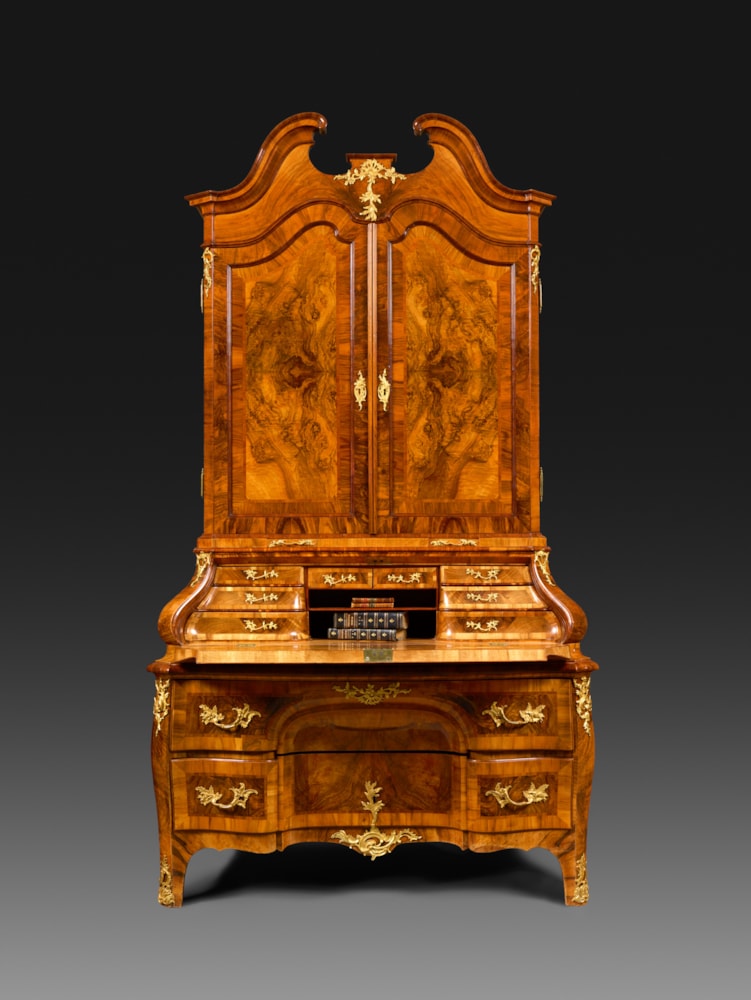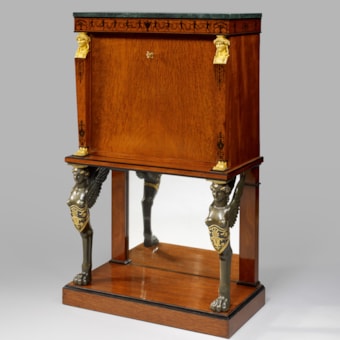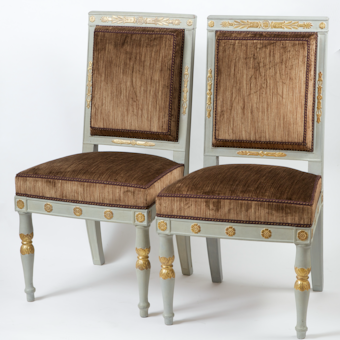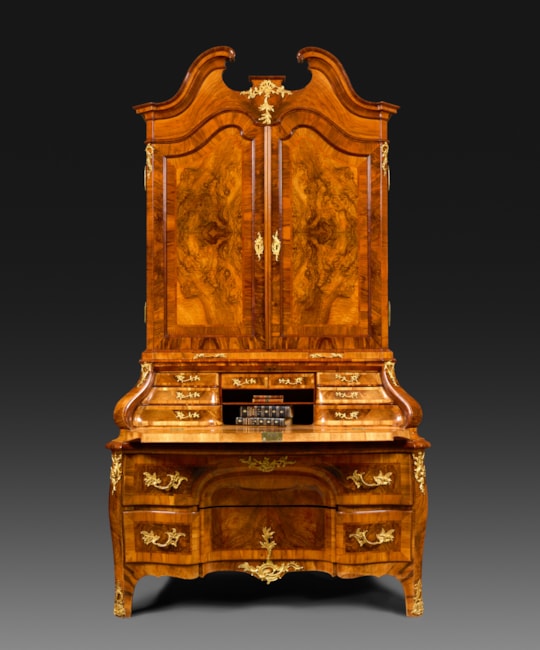Ref: 199
An important German cupboard
Ref: 199
An important German cupboard
18th Century
Circa 1750 - 1760
Oak Softwood Gilded Bronze
240 x 135 x 65 cm (94 ¹/₂ x 53 ¹/₈ x 25 ⁵/₈ inches)
Dresden Germany
Circa 1750 - 1760
Oak Softwood Gilded Bronze
240 x 135 x 65 cm (94 ¹/₂ x 53 ¹/₈ x 25 ⁵/₈ inches)
Dresden Germany
Provenance:
Since the 19th century the cupboard is in the same private collection in Dresden
Literature:
Rudolf von Arps-Aubert, Sächsische Barockmöbel 1700-1770, Berlin 1939, Vol. 33, p. 50-52, Fig. 60 and 61Gisela Haase, Dresdener Möbel des 18. Jahrhunderts, Leipzig 1983, Fig. 108, 109, 110, 112, p. 291, Fig. 94 and 95
Description:
Walnut on oak and softwood, gilded bronze
The symmetrical “mirror” veneered surfaces of its body are framed by ribbon and thread inlays. The two-door top is crowned by a round-arched, fluted pediment with a fine profile. The body is vertically structured by pilaster strips that stand out from a slight sweep. The interior of the top is characterized by a rich structure, which is based on architectural models with pilasters in front and cranked cornices. The central compartment, closed off by a hinged door, is flanked by a staggered arrangement of four drawers. Inside there is a shelf with rows of drawers behind it. The writing section, which protrudes in an elegant sweep over a circumferential cornice, is set into the top panel of the chest of drawers and rests on a fluted base
Walnut on oak and softwood, gilded bronze
The symmetrical “mirror” veneered surfaces of its body are framed by ribbon and thread inlays. The two-door top is crowned by a round-arched, fluted pediment with a fine profile. The body is vertically structured by pilaster strips that stand out from a slight sweep. The interior of the top is characterized by a rich structure, which is based on architectural models with pilasters in front and cranked cornices. The central compartment, closed off by a hinged door, is flanked by a staggered arrangement of four drawers. Inside there is a shelf with rows of drawers behind it. The writing section, which protrudes in an elegant sweep over a circumferential cornice, is set into the top panel of the chest of drawers and rests on a fluted base
you may also like







